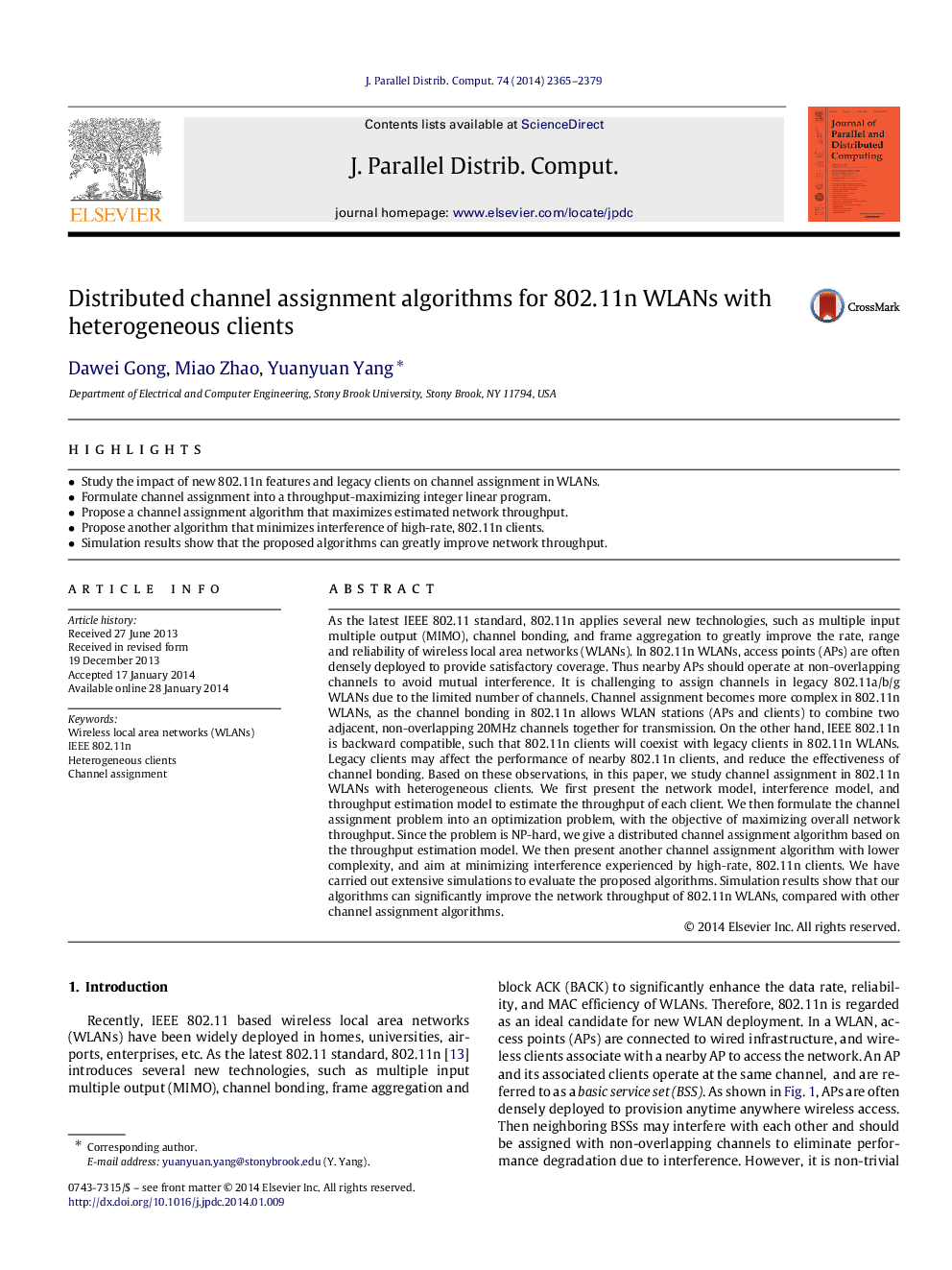| کد مقاله | کد نشریه | سال انتشار | مقاله انگلیسی | نسخه تمام متن |
|---|---|---|---|---|
| 431713 | 688617 | 2014 | 15 صفحه PDF | دانلود رایگان |

• Study the impact of new 802.11n features and legacy clients on channel assignment in WLANs.
• Formulate channel assignment into a throughput-maximizing integer linear program.
• Propose a channel assignment algorithm that maximizes estimated network throughput.
• Propose another algorithm that minimizes interference of high-rate, 802.11n clients.
• Simulation results show that the proposed algorithms can greatly improve network throughput.
As the latest IEEE 802.11 standard, 802.11n applies several new technologies, such as multiple input multiple output (MIMO), channel bonding, and frame aggregation to greatly improve the rate, range and reliability of wireless local area networks (WLANs). In 802.11n WLANs, access points (APs) are often densely deployed to provide satisfactory coverage. Thus nearby APs should operate at non-overlapping channels to avoid mutual interference. It is challenging to assign channels in legacy 802.11a/b/g WLANs due to the limited number of channels. Channel assignment becomes more complex in 802.11n WLANs, as the channel bonding in 802.11n allows WLAN stations (APs and clients) to combine two adjacent, non-overlapping 20MHz channels together for transmission. On the other hand, IEEE 802.11n is backward compatible, such that 802.11n clients will coexist with legacy clients in 802.11n WLANs. Legacy clients may affect the performance of nearby 802.11n clients, and reduce the effectiveness of channel bonding. Based on these observations, in this paper, we study channel assignment in 802.11n WLANs with heterogeneous clients. We first present the network model, interference model, and throughput estimation model to estimate the throughput of each client. We then formulate the channel assignment problem into an optimization problem, with the objective of maximizing overall network throughput. Since the problem is NP-hard, we give a distributed channel assignment algorithm based on the throughput estimation model. We then present another channel assignment algorithm with lower complexity, and aim at minimizing interference experienced by high-rate, 802.11n clients. We have carried out extensive simulations to evaluate the proposed algorithms. Simulation results show that our algorithms can significantly improve the network throughput of 802.11n WLANs, compared with other channel assignment algorithms.
Journal: Journal of Parallel and Distributed Computing - Volume 74, Issue 5, May 2014, Pages 2365–2379